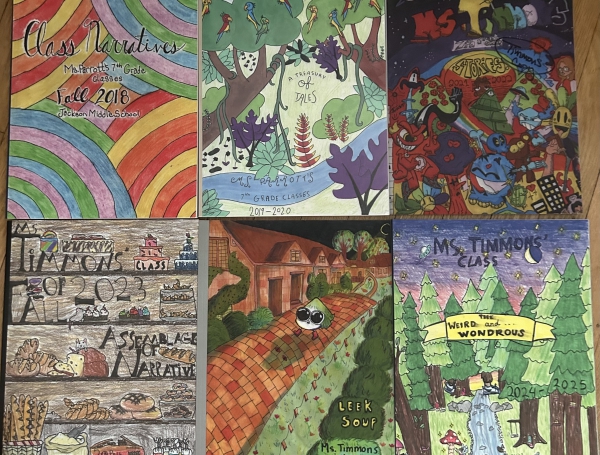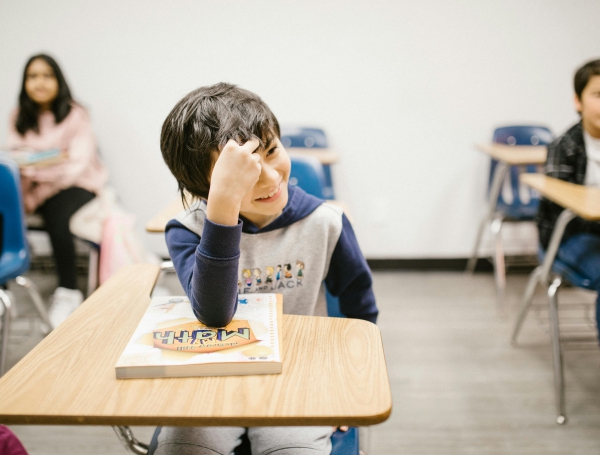

Building A Relationship Of Care, Respect, & High Expectations
September 14, 2022
In 2019 I was in my tenth year of teaching and teaching at a Title I school in a small community with the highest rate of poverty in our state. It just so happened that this was also my hometown- a place I had seen go from a flourishing town where good jobs were provided by the logging, fishing, and mill industries to a place where drug use was rampant. Families were disengaged from the school and the community as a whole. My classroom was the place where I could affect the most change, where I had the most influence, but truly my students just needed their basic needs met first. I had a special connection to the community, the kids, and the school building itself. I felt it an honor to give of myself in gratitude for the community that raised me. Knowing it looked very different now for the classes of kids going through my class over the years made me feel like the job was even more important.
As is typical in a first-grade classroom, my 18 students came to me with a wide variety of skills and abilities. It is always fun to see such a spectrum of prior knowledge, learning styles, and personalities. Still, it is always a challenge to meet each student where they are and scaffold instruction in a meaningful and effective way. I had high performers, an overbearing parent, parents that would never answer a call or come to conferences, students on the cusp of learning to read, students waiting on paperwork for Special Education evaluations and support, and so on. One particular student, we will call her Kay, had behavior needs that resulted in almost daily room clears. Screaming, yelling, throwing supplies, shoving tables and chairs, etc. I knew that she needed the very best of me but also that the rest of my class was counting on me to give her the help she needed so that they could get the attention and instruction they all deserved.
Progress was slow but steady. My expectations for Kay were clear, as was my compassion, and she began to trust me. We spent months building her skills- problem-solving, brain breaks, check-ins with an Instructional Assistant that Kay had also built a relationship. We created a behavior plan, so she could see how she was progressing through a day, week, or month. The room clears went from a daily occurrence to few and far between. Now, this isn’t to say everything was rosy. Kay still struggled to engage in academics. So, while she wasn’t hugely disruptive anymore, she needed encouragement and incentive to follow along with lessons and activities. Before we could move toward this phase of support for Kay, everything changed.
It was March 2020. (I could write a lengthy article on that alone). We had made so much progress, and I could clearly see this little one’s potential. We worked so hard to make her feel safe at school, trust the adults helping her, and work on self-regulation. Now, we had to try our best from a distance. I had only talked to Kaye’s mom on one or two occasions, and she was hard to engage. As our district rallied to provide the little technology we had access to, deliver school lunch deliveries, and give out school supplies and resources, family communication became crucial to check our students’ well-being. I was amazed at how my daily Seesaw messages and weekly phone calls were so well received, even by my most hesitant families- Kay’s included. I had parents and guardians open up about their fears, lack of food, loss of employment, health issues, etc. I had never had the channels open so wide before. Because of this new found emphasis on communication Kay’s mom confided in me that they were in the midst of escaping domestic violence and would be relocating to a community nearly two hours away. Thankfully, Kay was able to continue to be enrolled in my class, and our school could provide what limited resources we could in this situation. And while Kay may not have completed many distance-learning assignments, she continued to check in with me on Seesaw, and I continued to check in on the family for the remainder of the school year.
Building a relationship of care, respect, and high expectations allowed me to help Kay through what was a more difficult year than I would have ever known if it weren’t for the sudden change in our school year that spring. I relocated that summer without the ability to say goodbye to my students, past and present, or see them return the following fall and check-in. Kay is at the top of the list of prior students that I still think of and worry about. I hope she is still safe, working hard to meet her potential, and that she has teachers in her life helping her along the way.
This guest article was written by Paige Allen while taking the online continuing education course, Mindsets in the Classroom: Increase Student Achievement by THI instructor Brenda McKinney.




